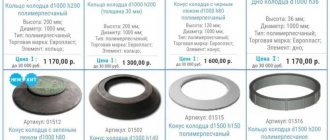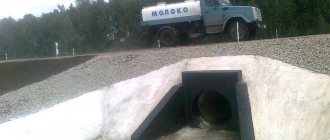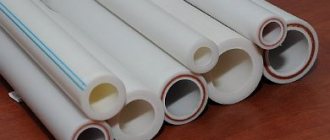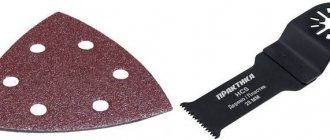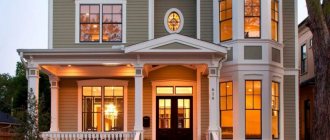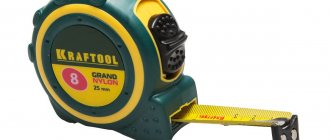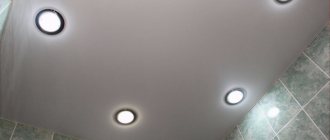Cooking meat, fish and vegetables on the grill is a traditional, pleasant, festive affair, but it has its drawbacks. The process is sometimes interrupted by bad weather, and the smoke wafting through the yard creates some discomfort for those around. To make grilling barbecue a pleasure, use a barbecue umbrella. The element is installed above the firebox and serves as a smoke exhaust.
Why do you need an exhaust hood?
An exhaust hood for a barbecue serves as a ventilation system.
Like the corresponding device in the kitchen, it is designed to:
- eliminate combustion products;
- dispel unpleasant odors;
- remove smoke;
- prevent grease and soot from settling on surrounding objects.
These qualities are very important when frying fish, seafood and meat, since aromas quickly spread through the air into the house, cars, and neighbors in the area.
Often such a device is installed in catering establishments, in holiday houses, gazebos, where barbecues are located under the roof of the building.
Outdoors, an exhaust hood also protects dishes and the grill itself from dirt, dust and precipitation during storage.
Metal chimneys
Collecting and removing combustion products from the room is the main function of the chimney. To perform this task most effectively, the hood should be installed directly above the fireplace and have a smooth surface, since any unevenness impairs the draft. Sheet steel should be used to make the smoke collector. Exhaust hoods are made from this material.
The design of the umbrella may somewhat resemble a funnel. The base area must be twice as large as that of the barbecue. To increase the rate of smoke intake, fans and filters are added to the design (they can be mechanical or electrical). During installation, insulating films, as well as various compounds, should be used.
Fans and filters do not need to be included in the system if the gazebo is used only in summer.
Design features
A barbecue hood is called an umbrella because of its external similarity. Like an umbrella over a person's head, it covers the top of the brazier. In this case, the shape of the dome may resemble a truncated pyramid or cone.
Pyramid hood
Pyramid hood
A pipe is connected to it. But there may not be a leg, depending on the location and shape of the attachment. No complex components or mechanisms.
The operating principle is simple:
- The smoke heats up to a temperature where it becomes lighter than air.
- The natural draft force is activated and the smoke rushes upward.
- The dome limits the space for smoke to spread to the sides.
- Volatile compounds enter pointwise into the narrow section of the chimney.
- The smoke rises through the chimney and is then freely dispersed by the air.
As a rule, it is enough to place the chimney for the barbecue at a height of 3 m from the ground . At such a distance, the wind does not lower what is picked up. In addition, it is taller than a person, so fumes and smoke a priori do not get into the eyes and nose.
For round grills and barbecues, use conical umbrellas. For square and rectangular shapes, a pyramid is more convenient.
At the very top, 10-20 cm from the pipe, a small canopy plate (straight or curved) is placed. It covers the hole from rain, but does not prevent smoke from escaping.
Application
A brazier is an open brazier. The smoke rises and passes through the meat, making it even tastier. But then I would like to remove the smoke somewhere. And if this is tolerable in the fresh air, then in the gazebo the smoke creates a problem, and indoors it makes using the barbecue completely impossible. A chimney is needed. Extraction of smoke and fumes.
Whether you purchase a factory model or make it yourself, be sure to make sure that your hood can be cleaned of soot.
Kinds
Exhaust umbrellas for barbecues are divided into types according to material and installation method.
By material
This criterion depends on the base of the grill itself. If the device is built of brick or stone, then the umbrella is often made of brick. For other options, metal is more preferable.
Brick grill with brick hood
Metal grill with metal hood
Each type has pros and cons. The main operational characteristics are taken into comparison:
- Strength. Brick is more rigid, and therefore resists mechanical stress better than metal. The masonry is not subject to disruption from the wind, deformation from impacts from hail, bird beaks, debris, or branches;
- Life time. Metal loses again, since it is capable of rusting, fading and changing shape from prolonged heating by the sun and fire, and breaks more easily;
- Difficulty of manufacturing. It has become easier to weld a sheet than to design and lay out a brick base, mix mortars and make a base;
- Price . Metal is cheaper than brick.
Meanwhile, both types cope equally well with the functions.
Selection of materials
It is recommended to mount a metal hood strictly in the center so that it hangs over the equipment. The pipe is covered with a visor to prevent moisture from entering. The material commonly used is copper or stainless steel, which resist corrosion best. Such materials can be used for a long period of time.
A metal hood is the most acceptable option; it is relatively inexpensive and has excellent performance characteristics.
Red or fireclay bricks are also used for hood, which have no less good technical characteristics. The mortar used for masonry is made in proportions of 1: 3, where 1 is cement of a grade of at least 400, and 3 shares are sifted sand.
Accessories
The following components are required to create a hood for a large barbecue:
- pipe;
- spark arrester;
- grease trap;
- fan with motor.
All components are collected from different sources. A brazier fan can be purchased at a store; a spark arrester and a grease trap can be easily made from a metal sheet. The most important element is the pipe, which must correspond to the operating power of the device. If the cross-section is too small, combustion products will enter the room, which is extremely undesirable. Before creating a hood, you need to make a detailed drawing and carry out careful calculations.
Construction of drawings
A correctly drawn up drawing is a guarantee of flawless operation of the device for many years. The cross-section of the pipe and the weight of the barbecue are the main parameters that must be taken into account when developing the plan diagram. You should start drawing a drawing with a sketch and drawing the basic dimensions of the barbecue. Based on these numbers, it will be possible to further calculate and draw the hood. A correctly drawn up drawing will also allow you to calculate the amount of material required. Avoid overspending.
Assembly Instructions
- First, the dome is assembled. Then the pipe is assembled and secured.
- After completing the welding work, the seams are processed with a grinder. The finished surface is coated with a fire-resistant anti-corrosion primer.
- Then you should mark the metal that will be used to cover the exhaust hood. Sheets are bent at the corner of the workbench. The metal is attached to the base using rivets and bolts;
- It is recommended to place a metal plate (size 98 x 35 cm) diagonally into the dome, which will help improve traction. The distance from the edge should be about 1.5 cm; the plate will be attached to these edges.
- The base is mounted on the grill using anchors or special screws. Afterwards the dome is installed and the pipe is secured with rivets.
The pipe can also be made of brick, but in this case it will weigh much more.
It will require a massive, solid foundation to avoid deformation or distortion during operation. Exhaust hoods made of bricks are created according to a simple principle: a metal frame is welded, which is lined with fire-resistant material.
Often the hood can be decorated with wild stone. A metal umbrella can also be covered with wooden panels; There must be a thermal gasket between the panels and the metal.
Manufacturing principles
Metal chimneys for barbecues are made of stainless steel sheets with an anti-corrosion coating of at least 2 mm. The collector, pipe and canopy elements are cut out directly on the sheet, then cut out and bent into the required shapes. The seams are secured with rivets, welding and snaps.
A brick umbrella requires the preliminary manufacture of a steel frame. It is recommended to weld it from iron corners. They are also additionally primed and painted with anti-corrosion paint. Next, the body is lined with heat-resistant bricks (fireclay or stove) using a fixing solution.
Expert opinion
Alexey Gavrilov
BBQ kitchen and equipment specialist
In any case, it is important to file down the protruding seams. With bricks, they can distort the masonry, leave holes, and if used independently, they risk injuring a person during washing.
On street umbrellas, additional slopes are made on the back side to drain water. A roofing material with heat-resistant properties is well suited for this function.
Other variations
Nobody limits your creativity when working on a hood. Of course, you need to follow certain rules.
But you can make a brick base, this is a base for a barbecue with a pipe. The pipe can also be built with bricks, or it can be made of metal.
Examples:
Also, no one obliges you to follow the classic shape in the form of the letter P. You can build a corner structure.
You can use wild stone to decorate a brick structure
Wood can also be used for decoration. It is better for them to upholster the metal version. Gaskets are needed here to insulate heat
Advice from professionals
When choosing and manufacturing exhaust hoods, various questions and difficulties may arise.
Experts advise paying attention to the following subtleties:
- If the smoke spreads out to the sides while wearing an umbrella, its area is too small. You can fix it without dismantling by installing a fan.
- Smoking may also indicate that the cross-section of the outlet pipe is too large or small. The chimney should be about 26 cm on each side in a square section and 15-20 cm in a round section.
- Ideally, the chimney should have a damper and a bend on the back wall. This design will improve aerodynamics and facilitate traction.
- Inside gazebos and other indoor spaces, it is optimal to choose the placement of an umbrella on chains. The pipe moves towards the middle of the roof roof.
- The smooth surface of the umbrella ensures easier maintenance.
- Metal umbrellas need to be maintained regularly and replaced every few years. From heavy use, soot and rust inevitably accumulate and sooner or later begins to fall on dishes.
- Metal umbrellas must be thoroughly washed to remove factory grease before first use. During heating, it may drip onto food, which is hazardous to health.
It is highly recommended to draw up a design for a barbecue area in advance, determine the exact location of the umbrella, and select the optimal mount for the weather conditions. The windier the area, the stronger the supports needed and the fewer holes in the surroundings.
Thus, an exhaust hood over the fryer can significantly facilitate its operation and improve the quality of rest. The selection rules are not particularly complex. If you take into account the specifics of the location in advance, installation will not cause problems.
Useful options
If you want to make your hood more functional, modify it by adding new elements. This will make its operation more comfortable, and you will need to spend less time cleaning after cooking.
So, what are these additional elements:
- Spark arrestor. It looks like a metal cylinder with a fine mesh, and is installed at the outlet of the chimney. Its function is to trap sparks that fall into the chimney along with smoke. This reduces the risk of fire. This element can be made with your own hands.
- Fan. Improves the performance of hoods that are installed in closed gazebos. It is installed directly into the chimney opening and connected to the electrical network using a wire.
- Grease trap. Since particles of fat come out into the ventilation along with smoke, this device is installed. It helps reduce chimney clogging. If you do it yourself, do it only on removable frames that can be removed and washed.
Rating of barbecues with metal hood
Gratar Professional Optima Umbrella ★4.8
A simple and elegant, and most importantly sustainable design from the flagship Gratar product line. The grill is made of structural steel. It is equipped with a chimney umbrella, which also serves as wind protection.
The work area is complemented by a special decorative stainless steel panel that protects the cook from burns. You can control the heat level in the firebox using a retractable ash pan.
This grill is suitable for placement in semi-enclosed spaces and is intended for use in any season. Side shelves expand the space for work, and a wide roasting pan allows you to cook large amounts of food; you can fry food simultaneously on skewers and on the grill.
Nuances of operation
I would like to pay special attention to firewood, which is recommended for use in the process of preparing various products. So:
- seafood and poultry - oak, grapevine;
- lamb, pork, beef - apple tree;
- turkey or salmon - alder;
- pork, poultry, seafood - maple;
- chicken, beef - birch;
- lamb, poultry - cherry.
Video: tips on how to properly stack firewood in a barbecue
Each type of wood will give the prepared dish a special taste and unique aroma. Experts do not recommend using coniferous wood for kindling, since resins may be released during combustion. If it is not possible to prepare firewood yourself, then you can buy briquettes with ready-made coal in almost any supermarket, which, moreover, excellently hold the heat necessary for cooking barbecue.
A selection of exhaust umbrellas from the store
Hood umbrella for barbecue areas KM-9.1 ★
A tall pyramid-shaped structure with sloping edges, which simultaneously serves as both a roof for the brazier and a smoke hood. Made from durable structural steel.
The thickness of the metal sheets reduces the risk of deformation of the umbrella under the influence of heat from the firebox.
To extend the chimney, pipes with a cross section of 215x245 mm are suitable. A simple and useful design that can be used both under a canopy and outdoors.
Specifications
- Case material: steel.
- Metal thickness - 1.5 mm.
- Hood height: 125 cm.
- The length of the hood is 83 cm.
- Hood depth - 46 cm.
- The weight of the structure is 21 kg.
pros
- High quality material.
- Attractive shape without unnecessary sharp corners.
- You can extend the chimney.
Minuses
- Heavy construction.
Large double-walled exhaust dome for barbecue areas Loft-13 ★
This hood is an octagonal dome with a double wall. This design feature increases the level of heat absorption and increases the fire resistance of the umbrella.
These indicators, in turn, increase the fire safety of the hood. A convenient and reliable dome that can be installed in covered gazebos over a barbecue, grill or tandoor.
Specifications
- Case material: steel.
- Metal thickness - 1 mm for the outer wall of the dome, 2 mm for the inner wall of the hood.
- Hood height: 126.1 cm.
- The diameter of the dome is 100.2 cm.
- The weight of the structure is 65 kg.
pros
- Durable thick walls that do not deform from heat.
- Low level of fire hazard.
- High quality steel.
Minuses
- Heavy weight.
- It is necessary to secure the hood above the structure.
Hood umbrella for barbecue areas KM-9 ★
This exhaust hood is made of 1.5 mm thick structural steel. With this design you can remove smoke from summer terraces or gazebos while cooking on a grill, barbecue or tandoor.
The hood has a small cover that protects the outlet from precipitation. If necessary, you can extend the chimney using pipes with a cross-section of 215x245 mm.
Suitable for use not only on areas with canopies, but also in open areas.
Specifications
- Case material: steel.
- Metal thickness - 1.5 mm.
- Hood height - 94 cm.
- The length of the hood is 83 cm.
- Hood depth - 44 cm.
- The weight of the structure is 18 kg.
pros
- There is a possibility of extension.
- Convenient shape.
- Durable metal.
Minuses
- Heavy weight.
Hood umbrella for barbecue areas with apron ★
What makes this design stand out from other smoke-removing devices is the presence of an “apron”, thanks to which the barbecue or barbecue grill can be installed next to the walls in covered or semi-covered areas.
It is possible to manufacture to order according to specified dimensions, with the required chimney diameter. A convenient option for a country gazebo or a small partially covered terrace, where you can put a barbecue against the wall to save space.
Specifications
- Case material: steel.
- Metal thickness - 1.5-3 mm.
- Hood height - 120 cm.
- The length of the hood is 100 cm.
- Hood depth - 40 cm.
- The weight of the structure is 25 kg.
pros
- High quality material.
- Possibility to extend the chimney.
- The presence of a wall protecting the space behind the fryer.
- Low risk of deformation from heat due to thickened walls.
Minuses
- There is no cover to protect the umbrella opening from precipitation.
Exhaust umbrella for barbecue, wall-mounted, made of galvanized steel with a tire rail ★
This barbecue hood requires additional chimney installation. The structure is made of galvanized steel 0.5 mm thick.
This model is perfect for installation in public catering places, outdoor cafes, and kitchens. But here you need to take into account that the dimensions of an umbrella on a tire rail increase around the perimeter by 25 mm.
Specifications
- Body material: galvanized steel.
- Metal thickness - 0.5 mm.
- Hood height - 40 cm.
- The length of the hood is 50 cm.
- Hood depth - 30 cm.
pros
- Suitable for installation in public catering outlets with high production turnover.
- High-quality steel with a protective coating.
- Can be installed directly on the grill, rather than hanging over the roasting pan.
Minuses
- A chimney needs to be installed.
Possible alternatives
Without breaking the law, you can cook barbecue on the balcony using two heat sources - electricity and gas. Moreover, it is highly advisable to purchase devices made by reputable manufacturers. They pay great attention to safety, so the risk of fire is negligible. But even these devices should not be left unattended.
Electric grill
An electric substitute for a classic barbecue can be:
- horizontal;
- vertical.
Horizontal models are more like regular barbecues. Even skewers with meat in them have to be rotated manually. Vertical devices have the form of an elongated cylinder. In addition to heating elements, they also have drives for rotating the skewers.
An electric grill for a balcony is the safest option. And since there are no prohibitions on its use even in enclosed spaces, no one will be able to make claims against you.
Stationary devices
A stationary barbecue is a massive structure equipped with:
- ventilation holes;
- lid;
- dust collector;
- grill grate, etc.
Such a stove has an impressive and prestigious appearance. But installing a stationary barbecue on the balcony will almost completely deprive it of free space.
Portable devices
Mobile structures for balconies are made using handicraft methods. They are small collapsible boxes. Many models are equipped with hooks for hanging on a balcony parapet.
The design features of portable barbecues are as follows: they can be quickly disassembled and stored away from prying eyes. But according to the law, you still cannot use it on the balcony: even in the smallest drawer there will be an open fire - an obvious source of danger.
Gas grill
This device consists of:
- A metal grate that acts as a cooking surface.
- Burner.
- Regulator, hoses.
All components of the device are enclosed in a housing. The structure is covered with a lid that helps retain heat inside the grill.
It is impractical to install a stationary gas pipe on the balcony, and no one will give permission for this. There is only one option left - a gas cylinder. It is connected to the gas supply regulators using hoses.
Air fryer
The kitchen unit, which looks like a transparent pan with a lid, is equipped with a heating element and a fan. The lid has a large number of holes. Through them, air masses enter the air fryer. The air rising after heating warms up the food. The fan ensures uniform cooking.
Newbie mistakes
Shortcomings in the design and installation of the hood become noticeable immediately after the start of operation. Most of them are fairly easy to fix.
- To reliably remove smoke, the height of the outlet end of the pipe from the ground must be at least 3 m. If the height is not enough, the chimney is increased.
- Often, when igniting, smoke does not escape into the hood at all. This is not an installation error. Until the flame gets hot enough, the density of the smoke is no different from the density of the air and therefore no difference in pressure is created.
- If the smoke does not come out even with a good flame, most likely the cross-section of the pipe is insufficient. In this case, the chimney is replaced. If only part of the smoke is lost, installing a fan will help.
A hood over a barbecue is a mandatory element of a stationary structure. Otherwise, the enjoyment of the party may be greatly spoiled by unpleasant odors and smoke.
Source of the article: https://strojdvor.ru/krupnye-konstrukcii/kak-sdelat-vytyazhku-dlya-mangala-svoimi-rukami/
How to make it yourself?
A metal hood has the following advantages:
- light weight;
- it is possible to install additional options;
- low price;
- simplicity of design;
- ease of installation.
Brickwork has an undeniable advantage: such a structure can stand for a thousand years without visible damage.
After all, it has a detrimental effect on the quality of prepared dishes and the operation of the air duct itself. Traction will sooner or later decrease due to accumulated dirt, so it is best to do preventive cleaning.
It is important to decide at the very beginning which type of exhaust device is preferable. The materials needed to create a metal hood are simple:
The materials needed to create a metal hood are simple:
- iron sheets 1–3 mm;
- corners with a section of 30 x 30 x 30 mm;
- bolts;
- thermal primer.
The height of the umbrella can reach 2 meters, the optimal size of the barbecue is 110 x 65 cm. The umbrella is composed of three units: a base, a dome with internal fastening and a pipe.
It’s not difficult to make a barbecue hood with your own hands. First, markings are made on a sheet of metal with a marker, which corresponds to the previously drawn sketches. Then, using a grinder, the necessary components are cut out, the parts are assembled and the joints are welded.
Brick hood has its own characteristics. It is created from special bricks (fireclay) mixed with clay and sand. The clay must be of a certain grade and soaked in water for 48 hours. In a brick hood, a special frame is made on which the brick is placed. In this case, the material must be treated with special fire-resistant enamel.
This is followed by brick laying. The base, that is, the first rad, is laid with the pushing side of the brick, the shortest. A typical smoke collector consists of 9–11 rows. The masonry is made in such a way that it tapers, that is, the displacement occurs about 16 mm at each level, at the end part 35 mm. Then a square-shaped pipe is laid from brick.
At the top, the pipe has a cross-section of 265–265 mm. This figure was obtained empirically; it is optimal for the operation of the retractor, while the height of the pipe is about 3 meters.
It is important to wait at least 3-4 weeks after finishing the masonry to allow the structure to settle for greater strength. There is no rush to use a “raw” structure
This can lead to deformation and cracking of the material.
The surface is covered with a special primer, which will protect it from exposure to high temperatures. As you can see, technologically there is nothing overly complicated in such work; masonry can be done by a person with minimal construction skills.
When working, be sure to use safety glasses and gloves.
Design options
A chimney for a barbecue and a metal hood are not the same thing. The chimney removes waste gas. With good traction, this is usually enough. However, the chimney duct does not prevent the spread of odors, grease splashes, and ash particles. The hood does this.
The design is a dome in the form of a parallelepiped or a cut pyramid. Often he creates a general design solution with a barbecue or stove. There are 2 types of construction.
Metal hood
Made from heat-resistant steel or copper. These alloys are more durable and resistant to high temperatures. The dome is placed quite low above the fireplace. It catches combustion products - solid, liquid, gaseous - and directs them into the chimney. The exhaust probe does not come into contact with communications.
A dome for a barbecue in a gazebo made of metal alloys has many advantages:
- universal and can be combined with stoves and barbecues of any kind and type;
- easy to install;
- does not require complex maintenance;
- can be equipped with additional devices: fan, filters;
- attractive.
Disadvantage: the metal gets very hot, so there is some risk of burns.
To remove soot, ash, and splashes effectively, the walls of the umbrella must be absolutely smooth. Their surface must be monitored and cleaned in a timely manner.
Brick construction
The dome is connected to the chimney into one whole. The cap itself is lined with stone; it looks like a pyramid. It covers most of the focal opening. Thanks to the draft, combustion products are discharged into the smoke exhaust channel.
- the brick dome combines the functions of a brazier and an exhaust hood;
- easy to repair;
- has a solid appearance;
- safe - the stone does not heat up as much as metal.
- the ventilation structure is bulky;
- To lay a dome with bricks, you need experience;
- higher cost.
For a brick hood you need refractory bricks and clay mortar.

